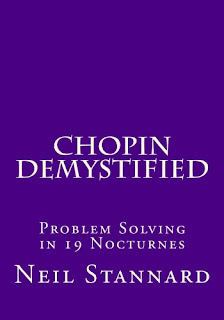 A student writes asking for advice about playing an etude that is clearly designed to teach the playing of double notes. Her approach at first was to employ only fingers, which is a mistake because the fingers do not act alone. Separating the fingers from the hand/arm alliance produces considerable strain, especially in speed.
A student writes asking for advice about playing an etude that is clearly designed to teach the playing of double notes. Her approach at first was to employ only fingers, which is a mistake because the fingers do not act alone. Separating the fingers from the hand/arm alliance produces considerable strain, especially in speed. |
| Double-Note Etude |
Instead of thinking of individual intervals played with separate fingers, consider shaping the intervals in pairs. The thumb likes to play in the direction of in, toward the fall board but still at the outer edge of the key. So, the sixth feels slightly in and the third slightly out, toward the torso. These are very small gestures, a sort of moving in place, so to speak.
Some might argue that down and up motions are called for. This can work, but the inclination is to make down and up gestures too large.
Having said all this, I ask why bother with this etude? If you want to play double notes look at passages in Beethoven's Appassionata or the Schumann Toccata. You don't need to play the entire work, just the salient measures. If those are too challenging, find passages in other repertoire to work on. Playing etudes like the above is a little like practicing X in order to do Y.
